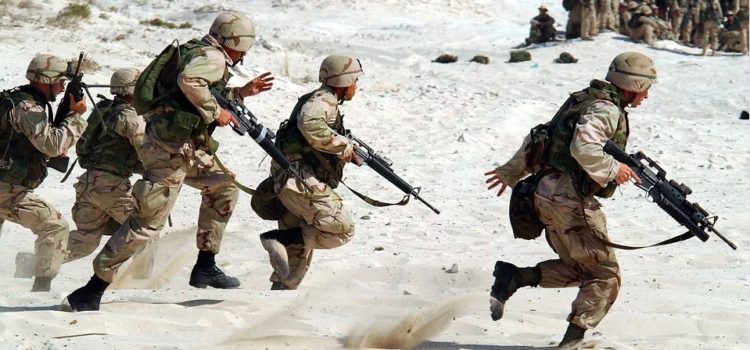

This article is an excerpt from the Shortform book guide to "Team of Teams" by Stanley McChrystal. Shortform has the world's best summaries and analyses of books you should be reading.
Like this article? Sign up for a free trial here .
How does the chain of command work in the American military? What are its main limitations?
The U.S. military chain of command has long been structured in a bottom-up fashion: information flows from the field up the chain of command, where decisions are made and orders are sent back down. While it allows for structured communication, running decisions up and down the chain of command takes too much time and creates too much risk.
Keep reading to learn about the military chain of command in the US task force, its history, and key limitations.
The U.S. Military Chain of Command
In organizations, including the military, the chain of command is generally based on the centralized, bottom-up command-and-control model. This model of organizational management goes back to the mid-1800s, when a Taylor contemporary, Henri Fayol, developed a theory of business administration. He argued that the job of workers was to provide information to superiors, then await orders from them.
The military chain of command operated the same way, on land at least. During the Civil War in 1864, Lieutenant General Ulysses S. Grant controlled where Major Gen. George Meade moved troops by communicating detailed instructions via letters and postal service.
However, naval operations were another matter—leaders lacked visibility and a communication line to naval commanders. So, a few years earlier, in 1852, President Millard Fillmore empowered Commodore Matthew Perry to do whatever was necessary to “open” feudal Japan as a trade gateway to Asia (foreigners couldn’t enter the country and the Japanese couldn’t leave).
Perry landed, then threatened Japanese officials with attack. He gave them a white flag with the explanation that if they fought, they’d lose, so they might as well keep the surrender option handy. They gave in and, after having threatened war, Perry took it upon himself to negotiate a trade agreement. However, since Perry’s time, communications advances have reduced the authority and autonomy of Navy commanders.
Case Study: The Joint Special Operations Command
In 2004, General Stanley McChrystal set out to reverse the Joint Special Operations Command (JSOC). He realized that running decisions up and down the chain of command took too much time and created too much risk. Enemy operatives were empowered to make decisions and act quickly, while task force staff had to follow protocols. So McChrystal began pushing decision-making authority down, in a policy of empowered execution. Often, he didn’t explicitly delegate—instead, he created a general rule: If it advances the task force effort, do it (assuming it’s moral and legal).
His more self-assured officers made decisions and reported them at the O&I briefing, where McChrystal’s public approval encouraged more people to act. The task force decentralized until it became uncomfortable, which McChrystal defined as the “sweet spot.”
Of course, there was a learning curve: Subordinate officers had to become comfortable with not only making decisions, but also pushing authority down further. Partner agencies were initially confused and wanted verification that subordinate officers were acting with McChrystal’s approval.
Soon though, empowered execution began paying off:
- Decisions were made more quickly, increasing the effectiveness of special operations.
- The quality of the decisions actually improved because those making them were more invested in the outcomes, and because the people closer to the action were better equipped to decide what to do (the way a baseball pitcher knows what pitch to throw). Task force leaders had expected decision quality to decline as a trade-off for speed—however, the results belied assumptions about leaders’ superior wisdom.
The key was preparation. It wouldn’t have been possible to restructure the military chain of command without first creating shared consciousness. This provided context for making decisions: In a reverse of the traditional military chain of command, leaders provided information so that subordinates with a systems understanding could make decisions.

———End of Preview———
Like what you just read? Read the rest of the world's best book summary and analysis of Stanley McChrystal's "Team of Teams" at Shortform .
Here's what you'll find in our full Team of Teams summary :
- How General Stanley McChrystal transformed the U.S. Joint Special Operations Task Force
- What teams that operate well can offer to an organization
- How the team of teams organizational model helped bring down a major Al Qaeda leader






